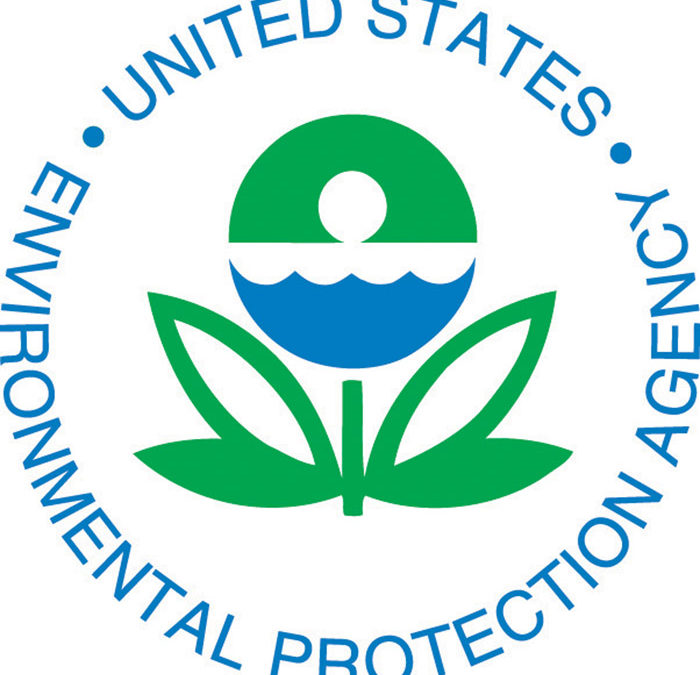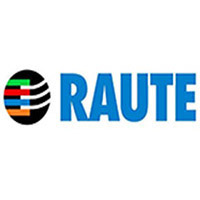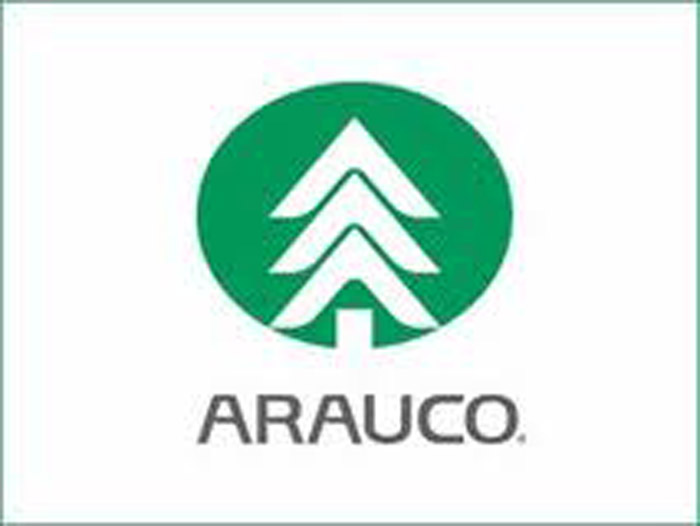
by Web Editor | Jun 17, 2013 | Update
U.S. Environmental Protection Agency proposed two rules to “ensure” that composite wood products produced domestically or imported into the U.S. meet the formaldehyde emission standards established by Congress. In 2010, Congress passed the Formaldehyde Standards for Composite Wood Products Act, or Title VI of the Toxic Substances Control Act (TSCA), which establishes emission standards for formaldehyde from composite wood products and directs EPA to propose rules to enforce the act’s provisions.
EPA’s proposed rules align, where practical, with the requirements for composite wood products set by the California Air Resources Board (CARB), putting in place national standards for companies that manufacture or import these products. EPA’s national rules will also encourage an ongoing industry development toward switching to no-added formaldehyde resins in composite wood products.
EPA’s first proposal limits how much formaldehyde may be emitted from hardwood plywood, medium density fiberboard, particleboard and finished goods. The emitted formaldehyde may be left over from the resin or composite wood making process or be released when the resin degrades in the presence of heat and humidity. This proposal also includes testing requirements, laminated product provisions, product labeling requirements, chain of custody documentation, record-keeping, a stockpiling prohibition, and enforcement provisions. It also includes a common-sense exemption from some testing and record-keeping requirements for products made with no-added formaldehyde resins.
The second proposal establishes a third-party certification framework designed to ensure that manufacturers of composite wood products meet the TSCA formaldehyde emission standards by having their composite wood products certified though an accredited third-party certifier. It would also establish eligibility requirements and responsibilities for third-party certifiers and the EPA-recognized accreditation bodies who would accredit them. EPS says the proposed third-party certification program will level the playing field by ensuring composite wood products sold in this country meet the emission standards in the rule regardless of whether they were made in the U.S. or not.
“CPA congratulates EPA for today’s release of important proposed rules implementing the Congressional establishment of a tough, fair and enforceable national standard on formaldehyde emissions from composite wood products,” says CPA President Tom Julia. “We look forward to reviewing the proposed rules during the public comment period and ensuring that they are crafted in a manner that meets the objectives of the legislation.”
CPA will be developing comments through its Emissions Regulation Task Group and Board of Directors. CPA will also coordinate the development of comments from a broad coalition of trade associations and other stakeholders similar to the California Wood Industry Coalition (CWIC) that submitted group comments on the CARB regulation.
The law applies to nonstructural composite wood products and thus exempts structural wood products such as structural plywood, OSB, I-joists, glued-laminated timbers and LVL.
The monthly Panel World Industry Newsletter reaches over 3,000 who represent primary panel production operations.
Panel World is delivered six times per year to North American and international professionals, who represent primary panel production operations. Subscriptions are FREE to qualified individuals.
Complete the online form so we can direct you to the appropriate Sales Representative. Contact us today!

by Web Editor | Apr 19, 2013 | Update
The Supreme Court recently ruled that logging roads are not subject to stringent industrial rules regarding stormwater runoff. The ruling in Decker v. Northwest Environmental Defense Center reverses a Ninth Circuit Court of Appeals decision that would have required Clean Water Act permits for stormwater that runs off logging roads.
According to Oregon Forest Industries Council, the rules would have required enormous compliance and permitting costs while opening the door for administrative challenges and litigation following every permit approval.
The Portland-based Northwest Environmental Defense Council had raised the issue in 2006 after arguing that such runoff posed threats to fish and other wildlife.
Essentially, the Supreme Court validated a recent Environmental Protection Agency interpretation of the runoff regulations. The EPA last year deemed that the stormwater permit regulation should extend only to traditional industrial buildings.
In 2006, the Northwest Environmental Defense Center sued certain timber-industry related defendants claiming that their logging activities resulted in the discharge of pollutants without a permit into streams in state forests in Oregon where they were harvesting timber. In 2010, the Ninth Circuit overturned an Oregon federal district court’s grant of a motion to dismiss the case, finding that ditches and culverts adjacent logging roads were point sources which required federal National Pollutant Discharge Elimination System (NPDES) permits.
The defendants in the case, who operated various logging roads, contended that the state’s Silvicultural Rule foreclosed the need for them to secure NPDES permits, and that potential impacts to water quality posed by the roads could be managed by state-level best management practices. Defendants also contended that, even without the Silvicultural Rule, their activities were not “industrial activities” requiring NPDES permits under USEPA’s Industrial Stormwater Rule.
The Supreme Court decision was a 7-1 vote, and written by Justice Kennedy.

by Web Editor | Apr 12, 2013 | Update
Mohawk Industries, Inc. is purchasing Spano Invest NV (Spano), a Belgian panel board manufacturer, for €125 million ($168 million) in cash. Spano’s 2012 revenues are estimated at approximately €180 million ($231 million). This transaction is expected to close in the second half of 2013.
Spano manufactures and distributes chip and melamine board, which are used to produce furniture and building products primarily in the Belgian market. Spano became a leader in the chipboard industry in 1977 when it introduced the first continuous press operations, significantly increasing its production capacity. Today, Spano operates facilities in Belgium and has an electricity plant joint venture that converts waste wood into green energy.
Jeffrey Lorberbaum, Mohawk’s chairman and CEO, states, “The combination of Unilin and Spano will create significant synergies to bring greater value to our customers and broaden our product offering. We look forward to bringing Spano’s talented team into the Unilin family.”
- Earlier, Mohawk Industries announced it had completed the acquisition of Pergo, a leading manufacturer of premium laminate flooring for $150 million in cash.

by Web Editor | Apr 12, 2013 | Update
In its annual report, the plywood and LVL machinery and technology manufacturer, Raute, said 2012 was a clear improvement over the past few years, including a EUR 50 million order for machinery and equipment for the reconstruction of the fire-destroyed Paneles Arauco plywood mill in Chile, and a EUR 14 million project for a LVL mill in Germany. Tapani Kiiski, president and CEO, emphasized that uncertainties abound in 2013 but there are positive developments in certain regions.
“My strongest expectations this year are focused on the emerging markets in Russia and Asia,” Kiiski said. “The outlook for North America has also improved from the extremely low level of the previous year, and new projects are being planned in Europe.”
The Raute reports notes that Russian plywood manufacturers are developing new innovative products and tapping boldly into new markets. The country’s plywood production has doubled over the past decade, and export and domestic demand is expected to increase. The growth is driven by increasing construction activity in the Moscow and St. Petersburg areas in particular.
China is the world’s largest producer of plywood and its production has increased almost five-fold in the past decade, and is expected to continue to grow though less intensively, according to Raute. While the current technology is “highly manual and simple,” the industry is expected to develop rapidly during the next few years as the quality demands imposed by export markets require more modern manufacturing processes.
Plantation forests will enable plywood production growth in the coming years in Malaysia and Indonesia, according to Raute. Due to the change in the raw material base, Raute expects the existing machine base to be rebuilt and modernized.
Continued growth is expected in Chile as new production capacity is built based on plantation forests. For the big forest industry companies, plywood manufacture is an important part of managing the optimal use of wood. Although plywood consumption is on the increase in Chile, most of the plywood is still exported to North America and Europe.
North America is the world’s second largest plywood producer and the largest LVL producer, according to Raute, where the top five companies produce 65% of the plywood and 85% of the LVL. However, within the past decade, plywood production has declined by half. A housing recovery is instrumental in renewed growth.
Raute reported it has continued to invest heavily in research and development, including the transfer of its Chinese plant into larger facilities, thus enhancing the company’s production capacity, quality control and delivery times in that region.

by Web Editor | Feb 18, 2013 | Update
U.S. Environmental Protection Agency (EPA) finalized changes to Clean Air Act standards for boilers and certain incinerators that it says will achieve extensive public health protections by slashing toxic air pollution, including mercury and particle pollution, while at the same time addressing feedback provided by industry and labor groups, increasing the rule’s flexibility and dramatically reducing costs. As a result, 99% of the approximately 1.5 million boilers in the U.S. are not covered or can meet the new standards by conducting periodic maintenance or regular tune-ups.
“As a result of information gathered through this review, including significant dialogue and meetings with public health groups, industry and the public, the final rule dramatically cuts the cost of implementation by individual boilers that EPA proposed in 2010,” according to EPA. EPA estimates that for every dollar spent to reduce these pollutants, the public will see $13 to $29 in health benefits, including fewer instances of asthma, heart attacks, as well as premature deaths.
The new rules set numerical emission limits for less than 1% of boilers—those that emit the majority of pollution from this sector. For these high emitting boilers and incinerators, typically operating at refineries, chemical plants and other industrial facilities, EPA is establishing more targeted emissions limits that protect public health and provide industry with practical, cost-effective options to meet the standards.
EPA has also finalized revisions to the Non-Hazardous Secondary Materials Rule to provide clarity on what types of secondary materials are considered non-waste fuels and provide greater flexibility in rule implementation. This final rule classifies a number of secondary materials as categorical non-wastes when used as a fuel and allows for operators to request that EPA identify specific materials through rulemaking as a categorical non-waste fuel.
Of most interest to composite manufacturers is the continued designation of resinated wood as a non-waste when used as a fuel, and its revised definition. EPA’s revised definition now includes additional materials in order to be more representative of the universe of resinated wood residuals that are currently used as fuels throughout the wood product manufacturing process, a change lobbied for by CPA. The definition, which now includes physical off spec materials, reads: “Resinated wood means wood products (containing binders and adhesives) produced by primary and secondary wood products manufacturing. Resinated wood includes residues from the manufacture and use of resinated wood, including materials such as board trim, sander dust, panel trim, and off-specification resinated wood products that do not meet a manufacturing quality or standard.”

by Web Editor | Feb 18, 2013 | Update
Empresas Copec reports that the rebuild of its Arauco plywood mill at Nueva Aldea, Chile, which was destroyed by fire in January 2012, is proceeding as expected. The $165 million (U.S.) plant will have a production capacity of 350,000 m3, which will be exported to markets in the U.S., Latin America, Europe, Asia and Oceania.
The mill is expected to start operations in late 2013 and reach full capacity in the first half of 2014.
Commencing on December 31, 2011, wildfires, exacerbated by high temperatures and strong winds, broke out in the Eighth Region of Chile. The fires destroyed the Nueva Aldea plywood mill and approximately 7,000 hectares of Arauco forest plantations, which represented approximately 0.7% of the company’s total plantations. The Nueva Aldea plywood mill represented approximately 14% of Arauco’s panel production capacity.





